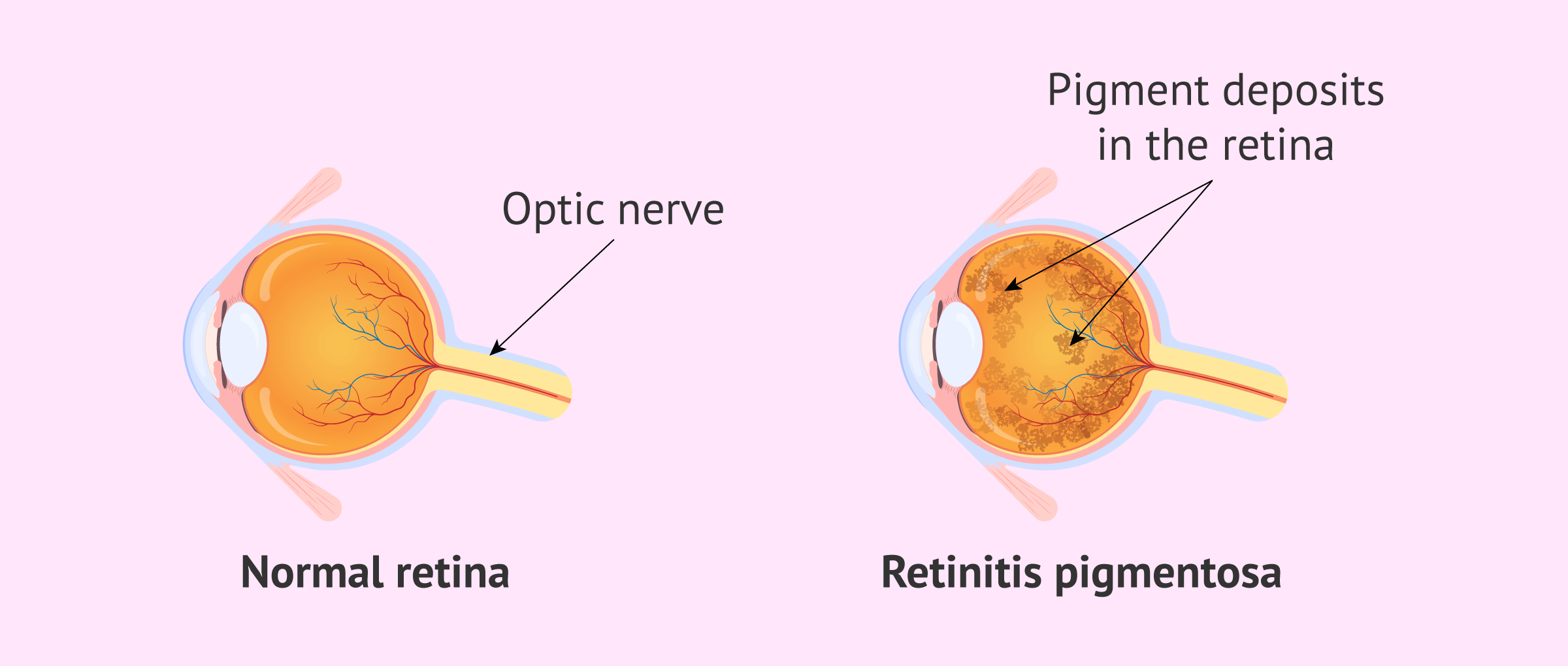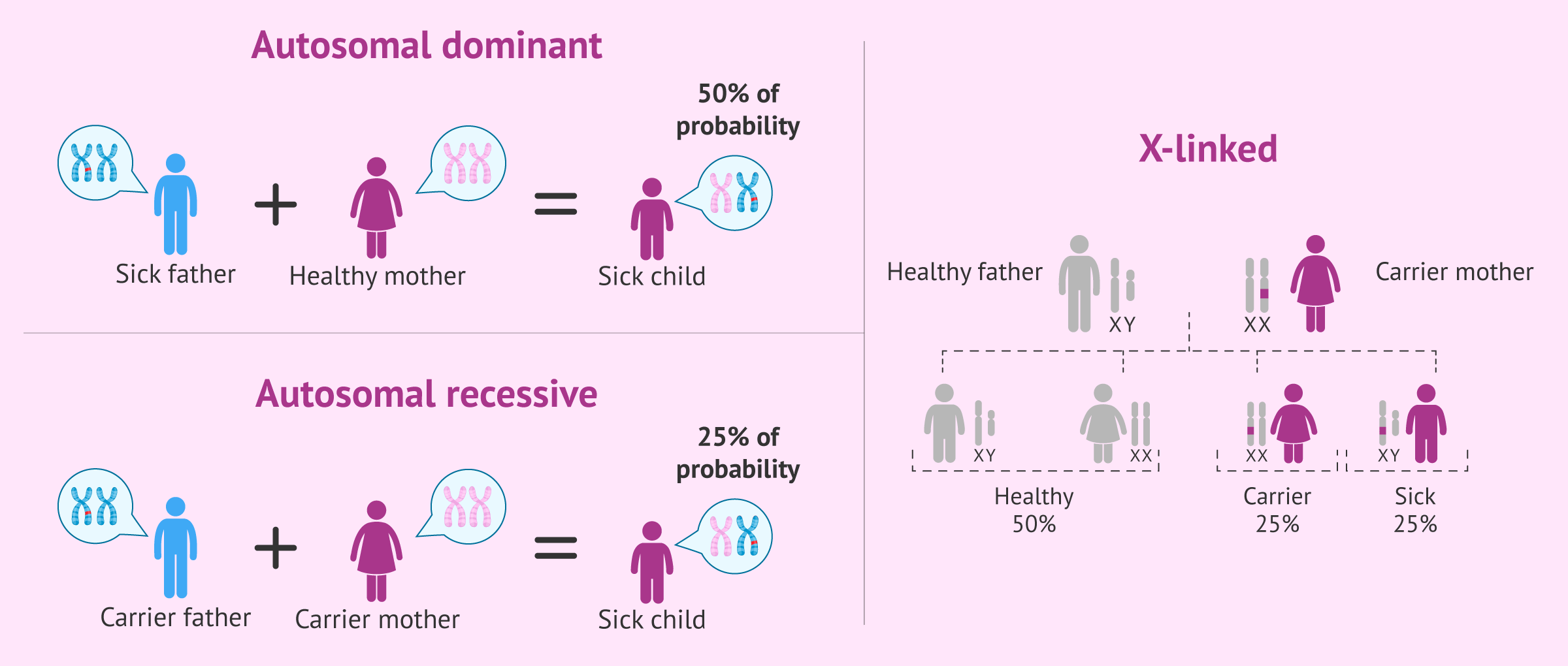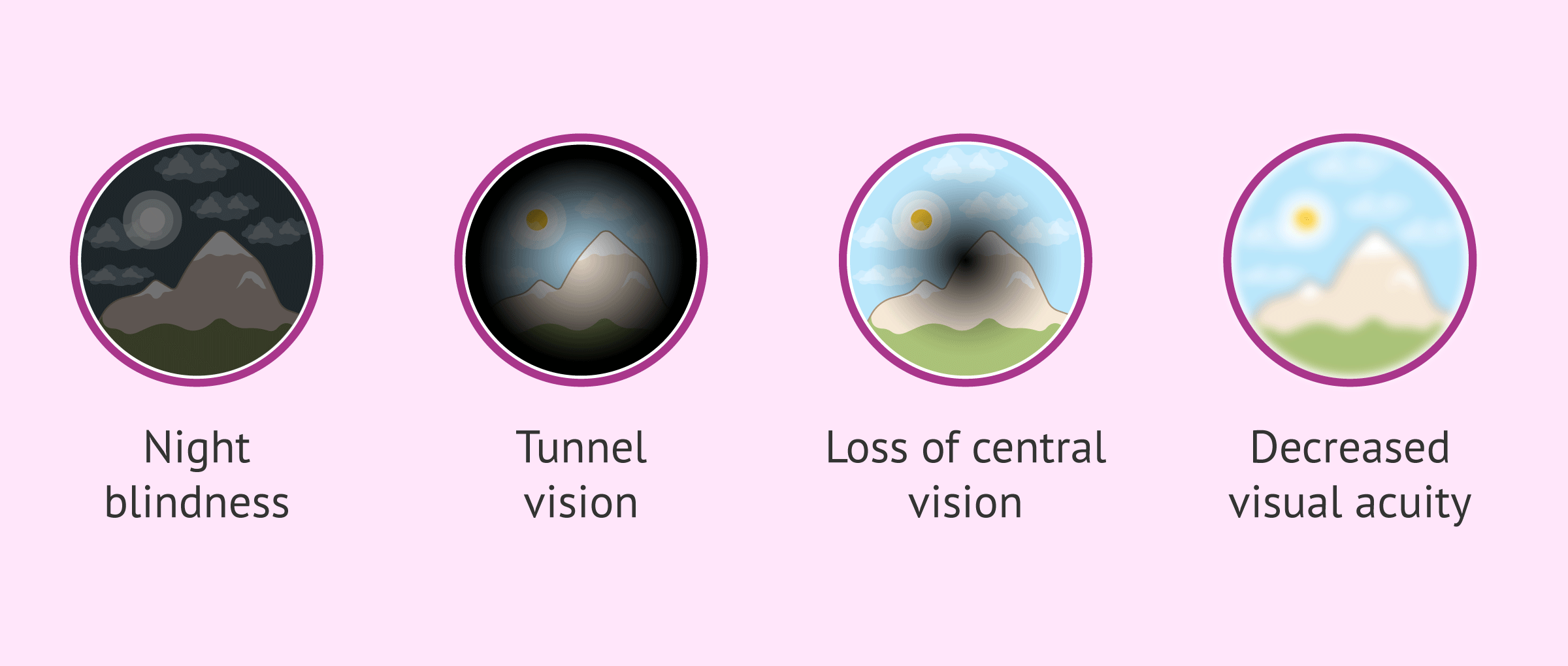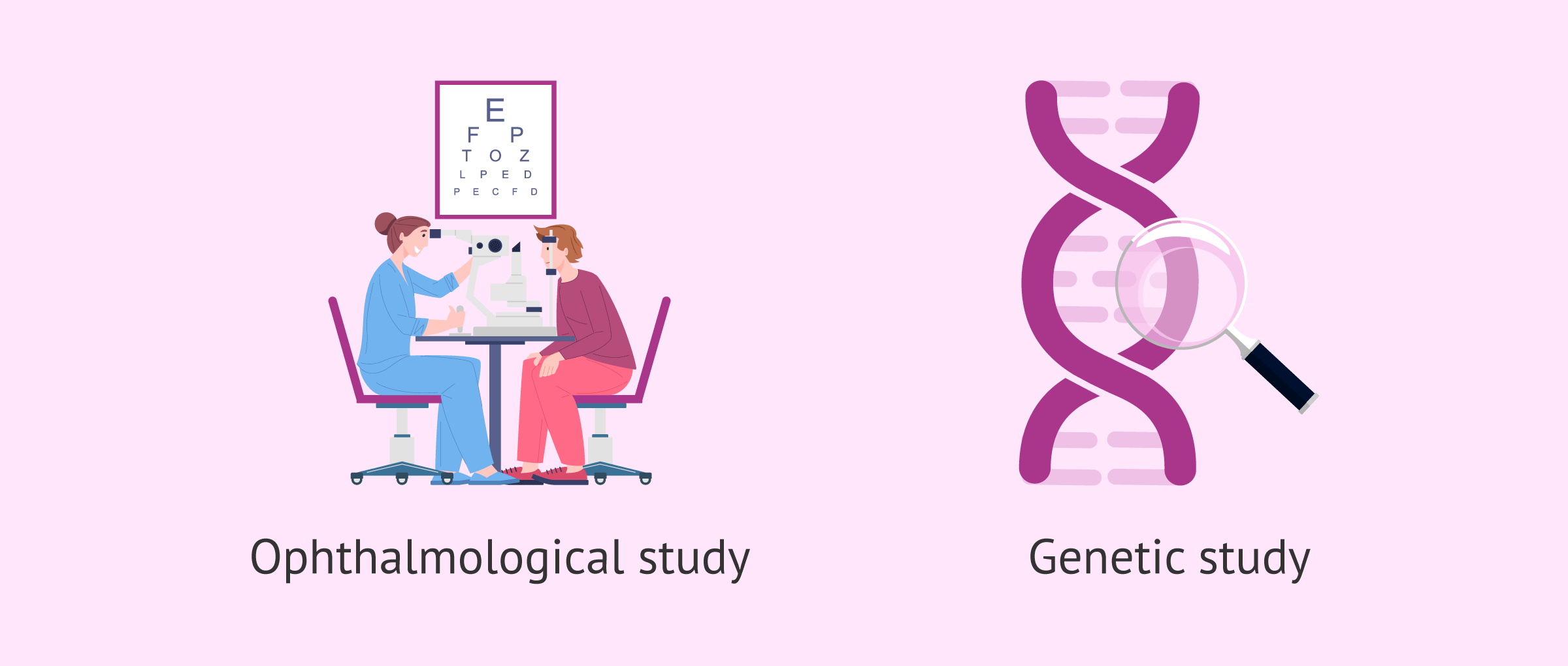Retinitis pigmentosa is a disease characterized by causing blindness due to degeneration of the photoreceptors in the retina, that is, the cones and rods.
The exact cause of retinitis pigmentosa is not known, but it is known to be a hereditary disease with different inheritance patterns.
Therefore, the most notable risk factor for this disease is family history, although the inheritance pattern is not straightforward. Retinitis pigmentosa may follow an autosomal dominant or recessive inheritance, as well as being X-linked. In addition, there are cases of retinitis pigmentosa in which the inheritance is not defined.
Provided below is an index with the 9 points we are going to expand on in this article.
- 1.
- 2.
- 2.1.
- 3.
- 4.
- 5.
- 6.
- 6.1.
- 6.2.
- 6.3.
- 7.
- 8.
- 9.
What is retinitis pigmentosa?
Retinitis pigmentosa (RP) is the most common cause of hereditary retinal degeneration, although it is considered a rare disease. It is estimated that there are 25,000 people affected in Spain.
The photoreceptors, meaning the cells responsible for converting light into signals that are transmitted to the brain, are gradually destroyed. As a consequence, retinitis pigmentosa causes blindness in a significant group of cases.
Severe vision loss does not affect all individuals equally, even within the same family. It is possible to find children more affected than their parents. Similarly, there may also be elderly people with normal visual acuity for their age.
Causes of retinitis pigmentosa
The etiology of retinitis pigmentosa is not known with certainty, but there are several theories about it.
Most cases of retinitis pigmentosa are due to mutations in genes associated with the retina.
However, environmental factors could also influence both the protection and progression of the disease. Nevertheless, more studies are still needed to draw conclusions.
Inheritance
This disease has several inheritance patterns, one of which, being less frequent, is the X-linked pattern. X-linked inheritance means that if a woman has one affected X chromosome, she will transmit the disease to her male children.
X-linked retinitis pigmentosa accounts for between 1 and 10% of cases.
Another inheritance pattern of retinitis pigmentosa is autosomal dominant. In this case, one of the parents has the disease, and there is a 50% chance of having a child with retinitis pigmentosa.
The autosomal recessive inheritance pattern is also possible for retinitis pigmentosa. The parents do not have the disease, but both carry the gene mutation and pass it on to their children. There is a 25% chance that their children will have the disease.
Finally, there have also been cases of sporadic retinitis pigmentosa that do not follow any Mendelian inheritance pattern. Approximately 40–50% of cases arise in this way.
What symptoms does retinitis pigmentosa cause?
The vision loss characteristic of this condition can occur in different ways. Below are some of them:
- Night blindness
- refers to the loss of vision in the dark, although vision during the day will be completely normal.
- Tunnel vision
- there is a loss of peripheral vision, so the patient will not see objects on the sides.
- Loss of central vision
- this will cause problems with tasks such as reading, although it is more common in patients in advanced stages.
Some people also experience difficulty distinguishing colors. Retinitis pigmentosa is also associated with glare sensitivity and reduced visual acuity in advanced stages of the disease.
How is retinitis pigmentosa diagnosed?
The ophthalmological study is the key to diagnosing retinitis pigmentosa. This study should include:
- Fundus examination.
- Measuring intraocular pressure.
- Electroretinography.
- Pupillary reflex assessment.
- Refraction test.
- Examination of peripheral vision.
- Visual acuity test.
Other more complex tests for the diagnosis of retinitis pigmentosa include electrophysiological studies, audiometry, and genetic testing.
Pregnancy with retinitis pigmentosa
Couples who want to have a baby and suffer from retinitis pigmentosa can do so thanks to assisted reproduction techniques.
Preimplantation genetic diagnosis (PGD) is the earliest form of diagnosis, as embryos are genetically analyzed before being transferred to the mother’s uterus.
For example, if the woman were a carrier of retinitis pigmentosa and the man healthy, there would be a 50% chance of transmitting the disease to their offspring. However, with PGD, the probability of the child not having retinitis pigmentosa is quite high.
This means that in families where women are carriers of the disease, having a healthy child would break the chain of transmission.
FAQs from users
Are there any measures to prevent retinitis pigmentosa?
In fact, there are no preventive measures, as this disease has a genetic origin. However, early diagnosis could improve the course of the disease.
In addition, genetic testing could reveal the inheritance pattern of retinitis pigmentosa and help determine the likelihood of transmission.
Is there a treatment for blindness caused by retinitis pigmentosa?
Currently, there is no fully effective treatment to stop the vision loss associated with retinitis pigmentosa. However, research is ongoing, and gene therapy is one of the main areas of study.
This therapeutic approach would involve replacing the altered gene with a healthy one, making it essential to identify the specific mutation in each patient.
In addition to gene therapy, cell therapies and retinal implants are also being explored as treatment options for retinitis pigmentosa.
Are there syndromes associated with retinitis pigmentosa?
Yes, there are certain diseases associated with the degeneration of the rods and cones in the retina. For example, open-angle glaucoma, myopia, cataracts, hypothyroidism, cardiovascular diseases, and diabetes are some of the conditions related to retinitis pigmentosa.
Recommended readings
If you are interested in learning more about other conditions, you can visit the following article: What Are Monogenic Disorders? - Classification & Most Common Types.
On the other hand, as mentioned earlier, the transmission of retinitis pigmentosa to offspring can be prevented thanks to PGD. If you want to learn more about this complementary assisted reproduction technique, you can visit this link: What is preimplantation genetic diagnosis or PGD?
We make a great effort to provide you with the highest quality information.
🙏 Please share this article if you liked it. 💜💜 You help us continue!
References
Fernández E. Retinosis pigmentaria. Preguntas y respuestas. Universidad Miguel Hernández de Elche. Cátedra de investigación en Retinosis Pigmentaria “Bidons Egara”, 2007.
Mitamura Y, Mitamura-Aizawa S, Nagasawa T, Katome T, Eguchi H, Naito T. Diagnostic imaging in patients with retinitis pigmentosa. J Med Invest. 2012; 59 (1-2): 1-11.
Winter JO, Cogan SF, Rizzo JF 3rd. Retinal prostheses: current challenges and future outlook. J Biomater Sci Polym Ed. 2007; 18 (8): 1031-55. Review.
FAQs from users: 'Are there any measures to prevent retinitis pigmentosa?', 'Is there a treatment for blindness caused by retinitis pigmentosa?' and 'Are there syndromes associated with retinitis pigmentosa?'.




